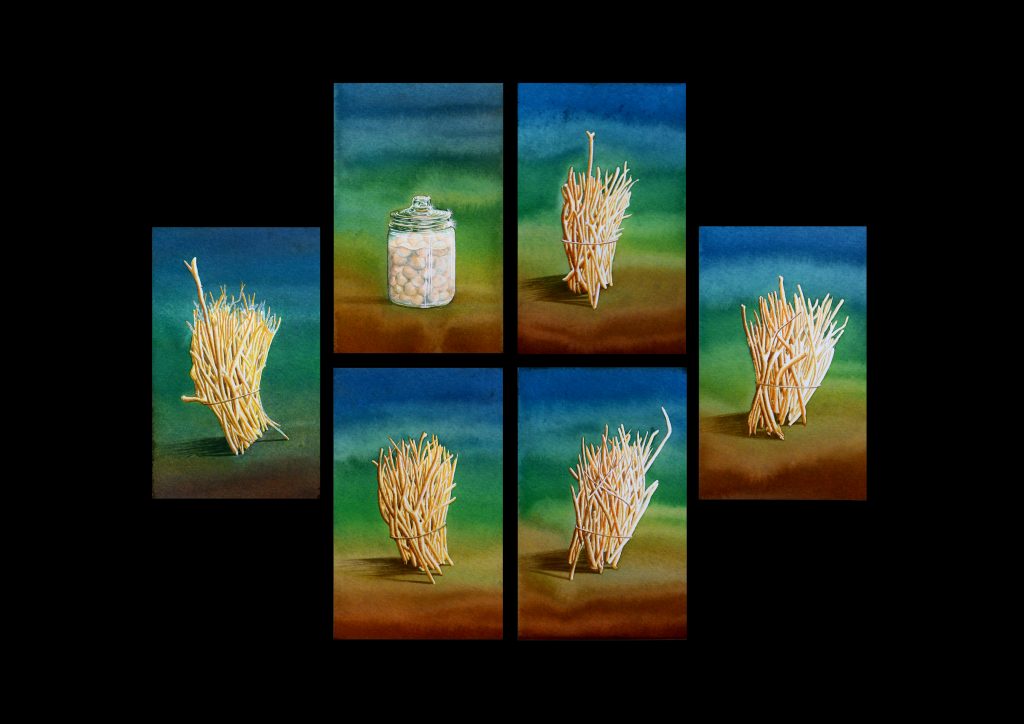Blogs
Subtexts: The Work of Gagan Mandal
Riya Kumar
A glimpse into the work of IARF grantee, Gagan Mandal which explores questions of morality and philosophy.
In June of 2021, MAP in partnership with 1Shanthiroad Studio launched a relief fund to support artists and their work during the difficult times posed by the Covid 19 pandemic. Open to all practising artists in India, the relief fund received an overwhelming response with over 1000 applications. Twenty artists were selected by an independent jury comprising Paula Sengupta, Radha Mahendru, Indrapramit Roy and Suresh Jayaram. The jury members also offered mentorship conversations to the artists.
In an attempt to showcase the exciting work that was achieved under this grant, we have placed the grantees and their artworks in conversation with each other, to respond to and facilitate a conversation around the common themes or concerns addressed in their art.
Gagan Mandal’s work created as part of the India Artist Relief Fund probes questions of human psychology and morality. The work features a series of watercolours which comprise delicate drawings of twig bundles as well as a jar with rasgullas, rendered against a background composed of hues of blue, green and brown. With a subtext of proverbial references, his works ask broader philosophical questions of human behavior in contemporary society.
In a conversation with Gagan, he brings up the example of what one might learn in an Indian classroom, and how this shapes conceptions of morality. Early exposure to the teachings of Subash Chandra Bose in conjunction with the reading of the Bhagavad Gita had a profound impact on him, providing a framework for moral conduct; the characteristics of what constitutes a “good” person to him.

Point, Gagan Mandal, 2022, Watercolour on paper, H. 12. 7 x W. 20.3 cm (each), Image courtesy of the artist
On first glance, the work, Point, evades a conceptual reading. But viewed in tandem with the Odia proverb the artist makes reference to ଯେତେ ଭାଇ ସେତେ ଘର (as many brothers, that many houses), one uncovers its metaphorical layers. The proverb loosely encapsulates the familial separation that occurs as a result of marriage: when a brother gets married, he leaves the familial home. In the artwork, the five bundles of twigs metaphorically represent the five Pandava brothers in the Mahabharata. The artist comments that despite the conflicts the brothers had to endure, they stick together, eventually overcoming their cousins, the Kauravas. To the artist, family disputes and separarations function as a microcosm for larger crises – wars, disputes over land and inter-regional conflicts. In Point, the bundle of twigs are more difficult to break than a single unit, highlighting the strength of the collective.
The presence of the rasgullas also reveals an autobiographical element. To Gagan, the jar of rasgullas evokes a childhood memory of a school contest where the winner received jalebis. The presence of a prize spurred a sense of competition amongst his peers. He relates this memory to a kind of rat-race mentality that capitalism and modern society can instigate. In the pursuit of a better lifestyle and financial security, at times, we find ourselves stepping on each other to get ahead.
Through his artwork, Gagan asks questions about the human psyche — how competition can prompt individualistic and even selfish thinking, offering collectivism as a counter-discourse.
Riya Kumar is a Curatorial Assistant at MAP. In her free time, she reads and watches instagram reels featuring golden retrievers.








